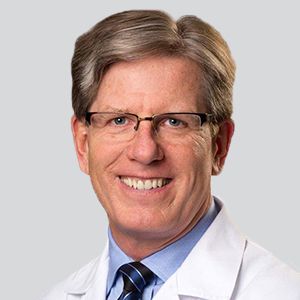Article
COVID-19: Protecting Health Care Workers During the Coronavirus Pandemic
Author(s):
As neurologists and other specialists may increasingly be called upon to serve as general hospitalists in the wake of the COVID-19 pandemic, keeping health care workers healthy becomes paramount.

Ron M. Walls, MD
This article was originally published on ContagionLive.
As more health care workers across specialties are likely to be called upon to fight the fast-growing COVID-19 pandemic, it is imperative to protect their health, according to James G. Adams, MD, of Northwestern University’s Feinberg School of Medicine, and Ron M. Walls, MD, of Harvard Medical School.
In an editorial published in the Journal of the American Medical Association, the co-authors explain that health care workers are facing a multi-layer challenge as the virus continues to spread rapidly across the US and around the world.
“The first is the potentially overwhelming burden of illnesses that stresses health system capacity,” they write, “and the second is the adverse effects on health care workers, including the risk of infection.”
In addition to his Harvard professorship, Walls is also executive vice president and chief operating officer at Brigham and Women’s Health Care, in Boston.
Adams and Hall note that in China, where the novel coronavirus appears to have originated, more than 3000 health care workers have become infected with the virus, and at least 22 have died. And while there are no firm data, the physicians note that there are reports of infected health care workers spreading the virus to family members. Some reports even suggest that transmission has occurred when the health care worker was asymptomatic.
Personal protective equipment (PPE) is one of the best defenses of health care workers, Adams and Hall note. However, they say the primary concern is surfaces that become contaminated via droplet and contact, rather than by airborne transmission.
READ MORE: COVID-19: Preventive Measures in Multiple Sclerosis Patients and Others on Immuno-Modulators
“Therefore, ensuring routine droplet barrier precautions, environmental hygiene, and overall sound infection prevention practice is indicated,” the co-authors say, noting that US Centers for Disease Control and Prevention guidelines suggest health care workers working with such patients wear gowns, gloves, and either N95 respirators with face shields or goggles, or powered air-purifying respirators.
Many of these items have been limited in supply of late. Even when they are available, the prices of such equipment has reportedly spiked. However, Adams and Hall say it’s possible to protect workers even without respirators.
“In a study of outpatient health care personnel in diverse ambulatory practices, medical masks applied to both patient and caregiver provided effectively similar protection as N95 masks in the incidence of laboratory-confirmed influenza among caregivers who were routinely exposed to patients with respiratory viruses,” they note.
They write that standard transmission-prevention tactics like hand-washing and environmental hygiene are also critical.
Unfortunately, health care facilities can be chaotic places at times, particularly in the emergency department, where healthcare workers face the potential of a large number of unannounced and undiagnosed patients arriving at once. Hall and Adams say health care workers must be quick and vigilant about isolating anyone who seems to be experiencing a respiratory illness. Such measures include putting face masks on patients upon arrival, promoting coughing etiquette, and providing for hand hygiene.
“Those patients with symptoms of suspected COVID-19 should be rapidly triaged and separated from the general population ideally in a well-ventilated space with a distance of at least 6 feet from others until they can be placed in an isolation room,” they write.
Ultimately, Adams and Hall say, health care workers ought to consider themselves at elevated risk of exposure, and act accordingly. One way to address that reality is to ameliorate concerns health care workers might have about the safety of their own families. Addressing such concerns could include things like providing priority access to testing, treatment, and vaccination if and when it becomes available. It can also mean providing employees with adequate time off to care for loved ones who become ill.
Adams and Hall say health care organizations must also communicate clearly and regularly with front-line health care workers, and encourage those workers to continue to practice self care.
“Transparent and thoughtful communication could contribute to trust and a sense of control,” they conclude.










2 Commerce Drive
Cranbury, NJ 08512
All rights reserved.
















